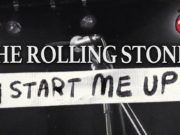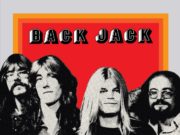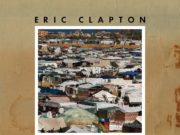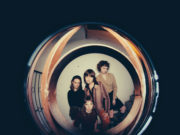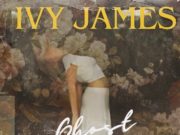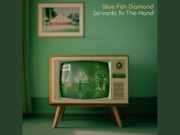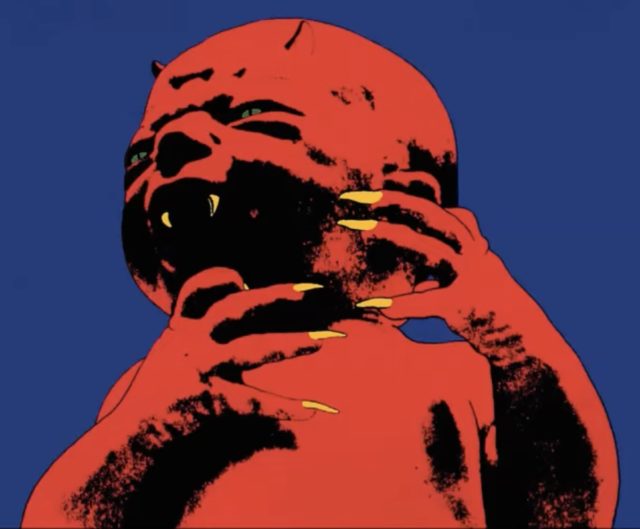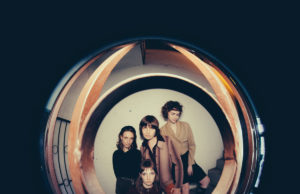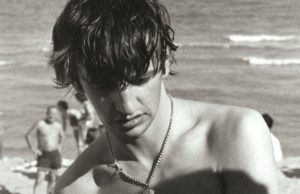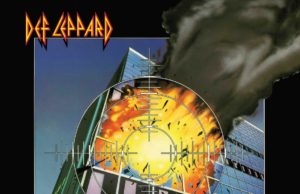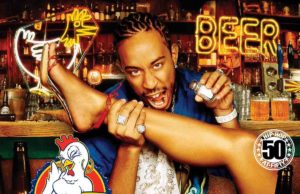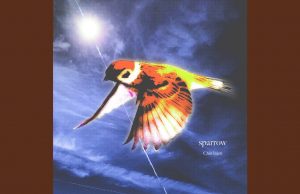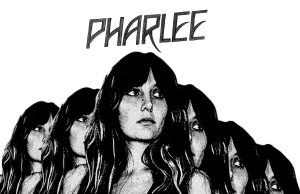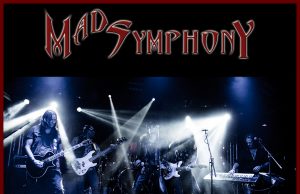 One of the times I really enjoy putting a record on is while I’m folding laundry. It’s kind of anything-goes time, because it’s just for me. I always seem to throw on something that I haven’t heard for a while. The most recent candidate was Alice Cooper‘s 1971 masterpiece Killer. I really need to get that 2023 remaster reissue of this album. My copy is one I’ve had since I was around 10 years old — still has the 1972 calendar intact!
One of the times I really enjoy putting a record on is while I’m folding laundry. It’s kind of anything-goes time, because it’s just for me. I always seem to throw on something that I haven’t heard for a while. The most recent candidate was Alice Cooper‘s 1971 masterpiece Killer. I really need to get that 2023 remaster reissue of this album. My copy is one I’ve had since I was around 10 years old — still has the 1972 calendar intact!
The song I was most looking forward to was Dead Babies, the controversial anti-drug song which deals with negligent parents. It starts off, like so many great Cooper songs of the era, with a melodic bassline. This one is slow and plodding and the artist formerly known as Vince Furnier sings overtop about a toddler named Betty who ate a pound of Aspirin because her parents were gone and didn’t stop her or hear her cry. The music stops. Cue one of producer Bob Ezrin’s many crying baby clips. It’s pretty effective and used to give me chills when I was a kid.
Despite the fact that nobody loves the sound of a crying kid, it’s a sound which can be used by the performer to communicate something joyful — or something dark like this.
The sound of a baby crying is evocative. Studies have concluded excessive crying as a baby can lead to emotional and behavioural problems in childhood. So that’s a trigger. Quite the trigger — one study which recorded interactions of 684 first-time, healthy mothers in 11 countries concluded that a mother’s brain will respond to a baby’s cry within five seconds — almost always positively. Specifically, MRI scans show the crying prompts the part of a mother’s brain which controls planning, standing and grasping. Oh, and it’s also true that an infant’s cries can trigger a rush of oxytocin, a brain chemical that controls the release of breast milk. So, I decided to see how many songs I could find with triggery baby cries in them. Just to stress you out.
We’ll do this chronologically. A great first example can be found on a track called Don’t Sell Daddy Any More Whiskey by Molly O’Day (aka Mattie O’Neil) in 1950. It has a crying baby basically all the way through it:
Something for the cool cats next, yeah. From 1959, daddy-o. My Baby by Ken Nordine is a gag song, designed to trick the listener that the vocalist is talking about his girlfriend when in fact he’s talking about his literal baby. Towards the end of the song, this is revealed through a scat-like babytalk solo by a rather happy-sounding wee’un.
Intergalactic nerds Jean-Jacques Perrey and Gershon Kingsley are up next from their legendary electronic pop album The In Sound From Way Out. This 1966 cut, Countdown at 6, uses samples of a baby’s cooing to break up the lines in what sounds to me like an instrumental version of Hello Muddah, Hello Faddah:
Next we have an early reggae track by Lee Perry — 1968’s People Funny Boy and its nearly ceaseless baby cries. The song is actually a diss track aimed at his producer:
Grand Funk Railroad’s self-titled 1969 sophomore album is loaded with bangers. In the middle of the second side you’ll find Paranoid, which begins with radio static and chatter followed by an air raid siren… it ends with a crying baby.
Funkadelic’s landmark 1971 album Maggot Brain ends with the epic band composition Wars of Armageddon — basically a freak-out jam by a bunch of guys who were taking a lot of acid. The crying baby just adds to the madness.
We’ll skip over the aforementioned Dead Babies to 1972 and a really stressful one by the legendary saxophonist Ornette Coleman. Two minutes into the title track of the manic Science Fiction, a baby starts screaming. And then, so do you.
Hidden in the middle of Side 2 of Lou Reed’s 1973 concept album Berlin is the seven minute-plus epic The Kids. The record is about a doomed couple. The Kids is musically a little different because it features Tony Levin on bass and Procol Harum’s drummer BJ Wilson. This is the second of Ezrin’s crying baby samples on my list — they come in towards the end with two minutes to go, just as the rhythm section really starts to cook.
Meantime, The Osmonds had just finished two wild departure rock albums — Phase III and Crazy Horses. Their 1973 album, The Plan, is all about Mormonism and the style of pop is wildly varied from what many still considered basically a teen idol, family band. Track 3 is a thing called Before The Beginning, which features a crying baby a minute in.
Flipping the calendar to 1974, we stay with the cooking rhythms on the last true Sly & the Family Stone album, Small Talk. This record was fertile ground for the sample-insatiable Beastie Boys. I believe they got at least two key Paul’s Boutique bits from it, and covered one of the songs (Time For Livin’) on Check Your Head. The sleeve photo shows Sly and his wife at the time, Kathleen Silva, with their baby Sylvester Jr. The little tyke cries and burbles all the way through the title track while Sly tries unsuccessfully to soothe the tot with finger snaps and groovy organ.
The opening and title track from Jethro Tull’s 1974 album War Child has a similar sound collage to that of Grand Funk’s Paranoid — it starts with the sound of an air raid siren, a baby crying and the voices of an English couple making tea as bombs drop in the distance.
Two years later, in 1976, Stevie Wonder took home all the hardware at the Grammys for his double (+ a 7″) album Songs In The Key of Life. One of the best-loved songs on the record, Isn’t She Lovely, would probably have been one of Stevie’s biggest hits if he hadn’t refused to shorten it. But he did, so it wasn’t issued as a single — but got tons of airplay just the same. The thing making Isn’t She Lovely so long is an extended section featuring a recording of Stevie bathing his daughter Aisha, whom the song is about. The song also opens with the sound of a baby’s first cry, recorded during an actual childbirth.
Now we go from parental bliss to fatherless children and the beginning of the song cycle of Pink Floyd’s The Wall from 1979. Following the bombastic intro of In The Flesh?, everything stops except the sound of a crying baby signalling the start of The Thin Ice. This is the song which introduces the listener to the main character of Pink as a baby and young child. There’s your third Ezrin sample.
Supertramp co-lead vocalist Roger Hodgson quit the band in 1983 and made his first solo album in 1984. In The Eye Of The Storm opens with a quiet synth pad and a crying newborn — right at the start of a track called I Had A Dream (Sleeping With The Enemy).
It’s difficult to decide where to put XTC’s song Happy Families, which begins with the sound of multiple crying babies. The song has its roots in the 1983 Mummer sessions, which is when it was demoed. Songwriter Andy Partridge included the song on his 1987 album of home cassette demos, Jules Verne’s Sketchbook. The completed version of the song was used as the flipside of the 1989 single King For A Day from Oranges And Lemons. Prior to that, the song was included on the soundtrack of She’s Having A Baby from 1988 — despite the fact that the song was only heard in the film as a brief instrumental coming out of a transistor radio. You can also find the song on the band’s 1990 compilation Rag & Bone Buffet.
The opening track of A Tribe Called Quest’s 1990 album People’s Instinctive Travels and the Paths of Rhythm opens with a crying baby. The baby has more to do with the start of the album than it does with the track Push It Along:
Pink Floyd make a second appearance on our list courtesy of Poles Apart from 1994’s The Division Bell — an album which seems to take an awful lot of shots at Roger Waters. Poles Apart has a cool, throwback Floyd middle section where — at 3:55 — you hear a baby cry.
The following year, 1995, we find the track One Big Mob from Red Hot Chili Peppers’ One Hot Minute. The liner notes of the album list Dave Navarro’s son, Gabriel James Navarro, as the performer of the crying on this track.
Also in 1995, Queen completed and issued their final album, Made In Heaven. It was done using parts Freddie Mercury had recorded for the project before he died in 1991. One of those last tracks is Made In Heaven, which ends with a sound collage culminating with a newborn’s first cries. There’s an epic video which boasts the same:
Tool’s 1996 track Cesaro Summability is a shortie, but effective. It’s basically just a baby crying and electronic noise. I laughed at one comment on the YouTube vid — a fan who said whenever he fell asleep with the album on, this track always woke him up in a cold sweat. The power of babies.
If you search for crying babies in popular music, the most-repeated result will be Aaliyah’s 1998 song Are You That Somebody? Co-written, produced and featuring Timbaland, it was recorded for the Dr. Doolittle soundtrack and earned the late Aaliyah Dana Haughton a Grammy nomination. Timbaland found the laughing baby sample while listening to a 1960s sound effects record.
The minute-long Interlude (Milo) in the middle of Modest Mouse’s 2004 album Good News for People Who Love Bad News features pump organ and standup bass and a whining baby. This wasn’t the reason the album was a huge success for the Portland, Oregon band — but rather the popularity of the single Float On. The record was nominated for a best alternative album Grammy, losing to Wilco’s A Ghost Is Born.
Similar to Stevie Wonder and Sly Stone, Jay-Z reportedly wrote and recorded the song Glory just hours after the birth of his and Beyonce’s daughter Blue Ivy Carter — who “sings” throughout the 2012 track.
Treat yourself to an emotional rollercoaster with this wailing wall of sound:
• • •
Area Resident is an Ottawa-based journalist, recording artist, music collector and re-seller. Hear (and buy) his music on Bandcamp, email him HERE, follow him on Instagram and check him out on Discogs.


